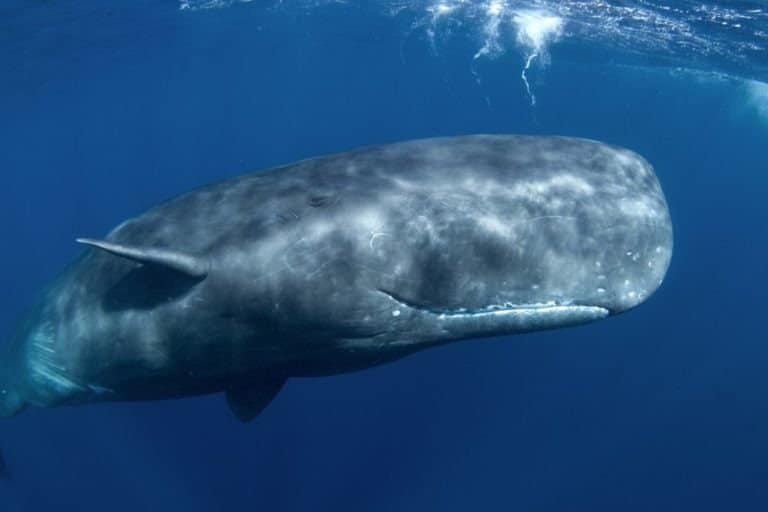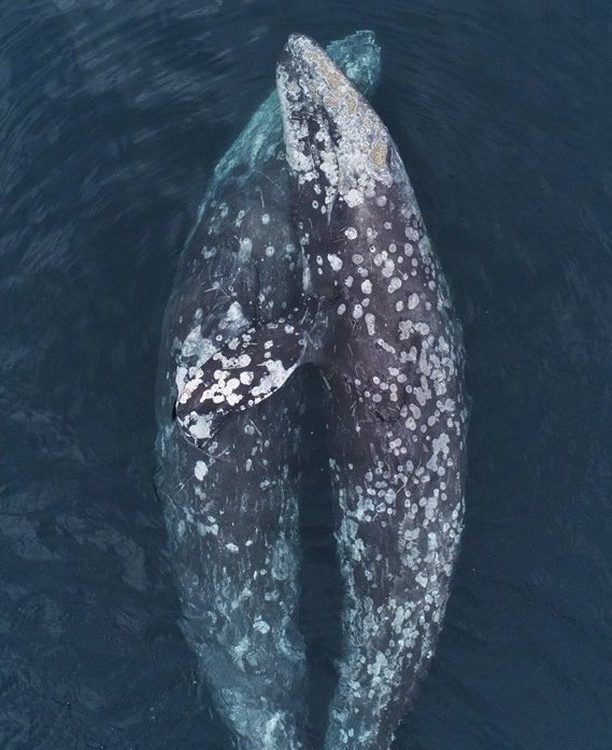
How Many Gallons of Sperm Does a Blue Whale Produce?
As the largest animal on Earth, the blue whale (Balaenoptera musculus) possesses a reproductive system of epic proportions. One of the most remarkable aspects of its reproductive biology is the sheer volume of sperm it produces. The sheer thought of a blue whale’s sperm production is mind-boggling. Let’s delve into the intriguing science behind this natural phenomenon.
During the breeding season, male blue whales secrete astounding quantities of sperm. Estimates suggest that a single ejaculation can release up to 450 gallons (1700 liters) of semen. This staggering volume dwarfs that of any other animal on the planet and serves a crucial purpose in ensuring the reproductive success of this magnificent species.
Imagine an Olympic-sized swimming pool filled to the brim with sperm. That’s roughly the equivalent of what a blue whale can produce in one go. It’s an incredible evolutionary adaptation that has evolved to overcome the challenges of finding a mate in the vast expanse of the ocean, where females are relatively scarce.
The Role of Sperm Quantity in Blue Whale Reproduction
The sheer volume of sperm isn’t merely a biological oddity; it plays a vital role in the reproductive strategy of blue whales. These gentle giants face immense odds when it comes to finding a mate. Blue whales have vast home ranges, and females are often spread far apart, making encounters infrequent.
By releasing such prodigious amounts of sperm, male blue whales significantly increase their chances of successfully fertilizing an egg. The high sperm count ensures that at least some of the sperm will reach the female’s reproductive tract and fertilize the egg, despite the immense distances and environmental challenges they face during the mating process.
Understanding the Blue Whale’s Reproductive Anatomy
To appreciate the magnitude of sperm production in blue whales fully, let’s delve into their unique reproductive anatomy. Male blue whales possess massive testicles, each weighing approximately 1,000 pounds (450 kilograms). These colossal testicles produce an astonishing number of sperm cells, which are stored in a specialized organ called the epididymis.
During copulation, the male blue whale uses a complex reproductive structure known as a penis to deliver its sperm to the female. The penis is housed within the ventral grooves of its body and can extend up to 10 feet (3 meters) in length. The penis is equipped with a groove on its underside that allows sperm to flow directly into the female’s reproductive tract.
Latest Trends and Developments
Research on blue whale reproductive biology continues to shed light on the intricate mechanisms that govern their reproductive success. Scientists are exploring advancements in reproductive technologies to address conservation concerns and enhance the overall health of blue whale populations.
One exciting development is the use of artificial insemination to assist endangered blue whale populations. By collecting and storing sperm from healthy males, scientists can artificially inseminate females that have difficulty conceiving naturally. This technique offers hope for preserving the genetic diversity of vulnerable populations and improving reproductive outcomes.
Another significant area of focus is the impact of ocean pollution on blue whale reproduction. Environmental toxins and microplastics can disrupt hormonal function and impair reproductive success in marine mammals. Scientists are actively studying these effects and developing mitigation strategies to protect blue whales and other marine life from these threats.
Tips and Expert Advice
As a passionate advocate for marine conservation, I strongly encourage everyone to support organizations and initiatives dedicated to protecting blue whales and their extraordinary reproductive capabilities. By understanding and appreciating the marvels of blue whale reproduction, we can make informed choices that contribute to their long-term survival.
Here are a few practical tips you can follow:
- Choose sustainable seafood: Opt for seafood products that come from sustainably managed fisheries to reduce your impact on marine ecosystems.
- Support marine conservation organizations: Donate to non-profit organizations that work tirelessly to protect blue whales and their habitats.
- Reduce your carbon footprint: Take action to reduce your carbon emissions, as climate change poses significant threats to marine life.
By embracing these recommendations, you can play a meaningful role in safeguarding these magnificent creatures and ensuring that future generations can continue to marvel at the wonders of their reproductive biology.
Frequently Asked Questions
Q: Why do blue whales produce such large volumes of sperm?
A: The massive sperm production is an evolutionary adaptation to increase the chances of successful fertilization in the expansive ocean environment.
Q: What is the average sperm count of a blue whale?
A: A single ejaculation can contain an estimated 450 gallons (1700 liters) of sperm, which is significantly higher than any other animal species.
Q: What are the challenges faced by blue whales in finding a mate?
A: Blue whales have vast home ranges and females are relatively scarce, making mating encounters infrequent.
Q: How does the anatomy of a blue whale contribute to its reproductive success?
A: Male blue whales have massive testicles and a specialized penis that facilitates sperm delivery to the female’s reproductive tract.
Q: What are the latest advancements in blue whale reproductive technology?
A: Scientists are exploring artificial insemination techniques and studying the impact of ocean pollution on blue whale reproduction.
Conclusion
The sheer volume of sperm produced by blue whales is a remarkable testament to the evolutionary marvels of nature. This extraordinary reproductive strategy ensures the survival and continuation of this magnificent species despite the vast and challenging environment they inhabit. By understanding and appreciating the wonders of blue whale reproduction, we can become more effective advocates for their conservation and ensure that these gentle giants continue to grace our oceans for generations to come.
Are you fascinated by the reproductive biology of blue whales and eager to learn more? Explore the vast ocean of knowledge available online and delve into the awe-inspiring world of marine conservation. Your curiosity and passion can help make a meaningful difference in protecting these extraordinary creatures.

Image: a-z-animals.com

Image: daveyslocker.com
New three-year research project to monitor and conserve marine … The Indonesian-language text superimposed on the photo translates to English as: “Blue whales expel 40 gallons of sperm each time they ejaculate, but only 5%-10% that makes it into his mate. That’s why seawater is salty.” The post contains two photos. The image on the left-hand side corresponds with this Alamy picture of a gray whale’s penis.